"The results of my observation are best explained by the assumption that a radiation of very great penetrating power enters our atmosphere from above." -Victor Hess
You might think of the largest and most powerful particle accelerators in the world -- places like SLAC, Fermilab and the Large Hadron Collider -- as the source of the highest energies we'll ever see. But everything we've ever done hear on Earth has absolutely nothing on the natural Universe itself! For this week's Ask Ethan, let's take a look at the simple question of our reader David Hurn, who asks:
Ever since I was a young reader of the Fantastic Four I have wanted to know all about Cosmic Rays.
Can you help?
So, let's take a look.
Even before the first human beings ever left Earth, it was widely known that up there, above the protection of the Earth's atmosphere, outer space was filled with high-energy radiation. How did we know?
The first clues came from looking at one of the simplest electricity experiments you can do on Earth, involving an electroscope.
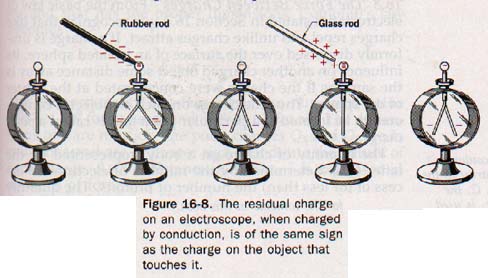 Image credit: Boomeria's Honors Physics page, via http://boomeria.org/.
Image credit: Boomeria's Honors Physics page, via http://boomeria.org/.
If you place an electric charge on one of these devices -- where two conducting metal leaves are connected to another conductor -- both leaves will gain the same electric charge, and repel one another as a result. You'd expect, over time, for the charge to dissipate into the surrounding air, so you might have the bright idea to isolate it as completely as possible, perhaps creating a vacuum around the electroscope.
But even if you do, the electroscope still slowly discharges! In fact, even if you placed lead shielding around the vacuum, it would still discharge, and experiments in the early 20th century showed that if you went to higher and higher altitudes, the discharge happened more quickly. A few scientists put forth the hypothesis that the discharge was happening because high-energy radiation -- radiation with both extremely large penetrating power and an extraterrestrial origin -- was responsible for this.
Well, you know the deal when it comes to science: you test it! So in 1912, Victor Hess conducted balloon-borne experiments to search for these high-energy cosmic particles, discovering them immediately in great abundance and becoming the father of cosmic rays.
The early detectors were remarkable in their simplicity: you set up some sort of emulsion (or later, a cloud chamber) that's sensitive to charged particles passing through it and place a magnetic field around it. When a charged particle comes in, you can learn two extremely important things:
- The particle's charge-to-mass ratio and
- its velocity,
simply dependent on how the particle's track curves, something that's a dead giveaway so long as you know the strength of the magnetic field you applied.
In the 1930s, a number of experiments -- both in early terrestrial particle accelerators and via more sophisticated cosmic ray detectors -- turned up some interesting information. For starters, the vast majority of cosmic ray particles (around 90%) were protons, which came in a wide range of energies, from a few mega-electron-Volts (MeV) all the way up to as high as they could be measured! The vast majority of the rest of them were alpha-particles, or helium nuclei with two protons and two neutrons, with comparable energies.
When these cosmic rays hit the top of the Earth's atmosphere, they interacted with it, producing cascading reactions which created showers of high-energy particles, including two new ones: the positron -- hypothesized in 1930 by Dirac, the antimatter counterpart of the electron with the same mass but a positive charge -- and the muon, an unstable particle with the same charge as the electron but some 206 times heavier! The positron was discovered by Carl Anderson in 1932 and the muon by him and his student Seth Neddermeyer in 1936, but the first muon event was discovered by Paul Kunze a few years earlier, which history seems to have forgotten!
One of the most amazing things is that if you hold out your hand so that it's parallel to the ground, about one muon passes through it every second.
Every muon that passes through your hand originates from a cosmic ray shower, and every single one that does so is a vindication of the theory of special relativity! You see, these muons are created at a typical altitude of about 100 km, but a muon's mean lifetime is only about 2.2 microseconds! Even moving at the speed of light (299,792.458 km/sec), a muon would only travel about 660 meters before it decays. Yet because of time dilation -- or the fact that particles moving close to the speed of light experience time passing at a slower rate from the point-of-view of a stationary outside observer -- these fast-moving muons can travel all the way to the surface of the Earth before they decay, and that's where muons on Earth originate!
Fast-forward to the present day, and it turns out that we've accurately measured both the abundance and energy spectrum of these cosmic particles!
Particles with about 100 GeV worth of energy and under are by far the most common, with about one 100 GeV particle (that's 1011 eV) hitting every square-meter cross-section of our local region of space every second. Although higher-energy particles are still there, they're far less frequent as we look to higher and higher energies. For example, by time you reach 10,000,000 GeV (or 1016 eV), you're only getting one-per-square-meter each year, and for the highest energy ones, the ones at 5 × 1010 GeV (or 5 × 1019 eV), you'd need to build a square detector that measured about 10 kilometers on a side just to detect one particle of that energy per year!
Seems like a crazy idea, doesn't it? And yet there's an extraordinarily compelling reason that we'd want to do so: there should be a cutoff in the energies of cosmic rays, and a speed limit for protons in the Universe! You see, there might not be a limit to the energies we can give to protons in the Universe: you can accelerate charged particles using magnetic fields, and the largest, most active black holes in the Universe could give rise to protons with energies even greater than the ones we've observed!
But they have to travel through the Universe to reach us, and the Universe is filled with large amounts of cold, low-energy radiation: the cosmic microwave background!
The only places where the highest energy particles are created are around the most massive, active black holes in the Universe, all of which are far beyond our own galaxy. And if particles with energies in excess of 5 × 1010 GeV are created, they can only travel a few million light years -- max -- before one of these photons, left over from the Big Bang, interacts with it and causes it to produce a pion, radiating away the excess energy and falling down to this theoretical cosmic energy limit, known as the GZK cutoff. (More details here.)
So we did the only reasonable thing for physicists to do: we built a detector that ridiculously large and looked!
The Pierre Auger Observatory has done exactly this, verifying that cosmic rays exist up to but not over this incredibly high-energy threshold, a factor of about 10,000,000 larger than the energies reached at the LHC! This means the fastest protons we've ever seen evidence for in the Universe are moving almost at the speed-of-light, which is exactly 299,792,458 m/s, but just a tiny bit slower. How much slower?
The fastest protons -- the ones just at the GZK cutoff -- move at 299,792,457.999999999999918 meters-per-second, or if you raced a photon and one of these protons to the Andromeda galaxy and back, the photon would arrive a measly six seconds sooner than the proton would... after a journey of more than five million years! But these ultra-high-energy cosmic rays don't come from Andromeda; they come from active galaxies with supermassive black holes like NGC 1275, which tend to be hundreds of millions or even billions of light years away.
We even know -- thanks to NASA's Interstellar Boundary Explorer (IBEX) -- that there are about 10 times as many cosmic rays out there in deep space as we detect here on-and-around Earth, as the Sun's heliosheath protects us from the vast majority of them!
And that's the fantastic story of cosmic rays, including my favorite aspect of them: the highest energy particles in the Universe and the cosmic energy limit! So, David, you're our third contest winner and we've got two more to go! If you've got a question you want answered (and a chance to win), ask your best ones here, and I'll see you again for more about the natural wonders of the Universe next week!



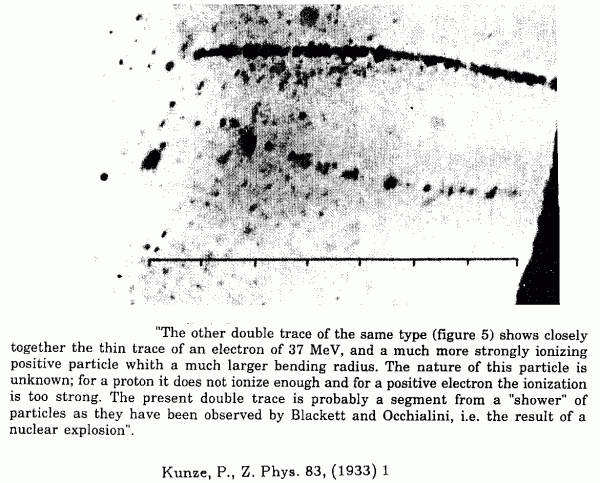

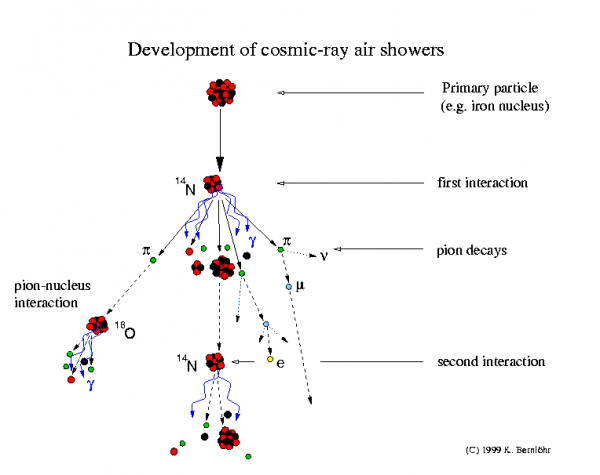
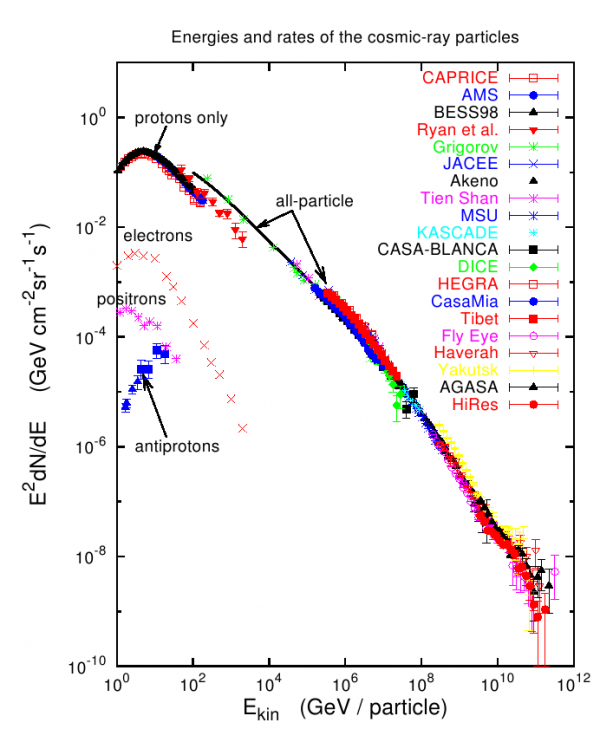
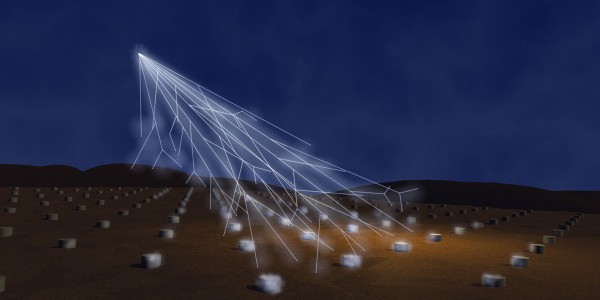
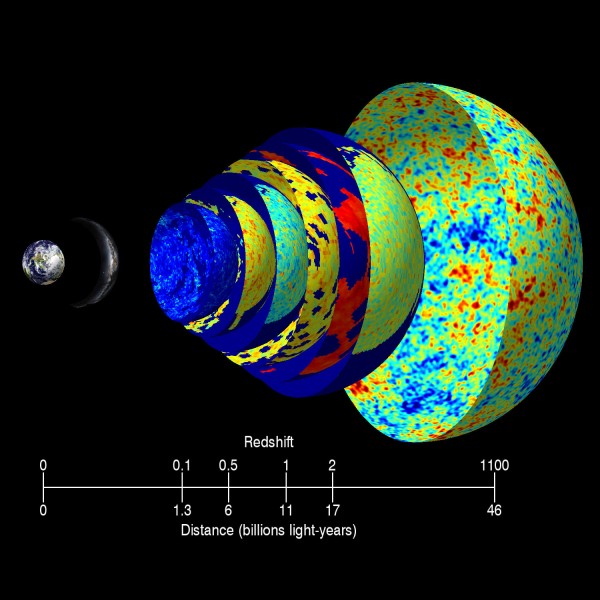


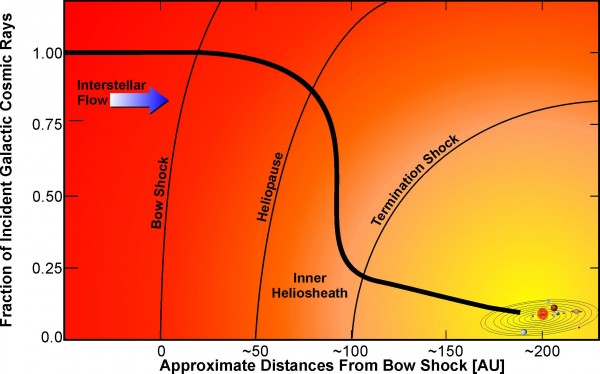
Testing my understanding. Does it follow that...
If the Proton returns to Earth 6 seconds after the photon
And the photon experiences instant travel in its frame
That the proton experiences 6 seconds travel time in its frame?
[I tried plugging the figure 299,792,457.999999999999918 m/s & 5M ly into various online relativity calculators & they didn't like that number of places. Wolfram looked like it works, but I couldn't understand the result :) ]
What an awesome high energy post ( in more ways than one! ) Still not sure if cosmic rays arrive uniformly from all directions, or I would think more likely, favoring certain directions. Is there a cosmic ray map of the sky?
Michael @1, technically it's more like 6.5 seconds, but that is correct: the proton will travel to Andromeda in ~3 seconds in its reference frame, and back in ~3 seconds as well. That's because it's moving so ultra-relativistically that the distance between here and Andromeda contracts down so severely in its reference frame that it's barely more than twice the Earth-Moon distance is in our reference frame! If you'd like to use an online calculator, you may be better off computing (1 - v/c) yourself and working with that number.
Jim @2, the best ultra-high-energy cosmic ray map that I know of is available in this white paper, although you can find a more recent preliminary map here (scroll way down) and look at the highest-energy events at the Auger Observatory's online archive. As you can see at that last link, there are currently two events observed with energies in excess of 4 x 10^19 eV, but none at 5 x 10^19 eV or above. Amazing!
What are we talking about in terms of impact force (hope I named it correctly), or some real life analogue for 100GeV, or 10TeV or.. particle traveling close to "c". Something along the lines of everyday measures.. like grams, kilos, meters, kilometers? What would be an equivalent?
According to Wolfram Alpha, 5E10 GeV is equivalent to eight apples being lifted a height of one meter (and therefore equivalent to dropping eight apples from a height of one meter).
Imagine someone dropped a bag of apples on you from meter. You'd probably not be hurt, but if you were taking a nap you'd definitely wake up angry. Now imagine that came from ONE PARTICLE. That's fricken' crazy!
http://www.wolframalpha.com/input/?i=5E10+GeV+in+Joules
Wow, that's a lot. I wonder if ever someone was actually struck by a gamma ray particle not knowing what it really was.. like who threw that stone? except there's no one around...
Sinisa, that may well be one of the causes of random cancers; a stray gamma ray nailing an important bit of DNA straight on and causing a transcription error. Thanks to the redundant nature of our cells, it's a rare occurrence, but since they're falling all the time...
Nice.
As a follow on "The “Extreme Universe Space Observatory - EUSO” is the first space mission devoted to the exploration of the Universe through the detection of the extreme energy (E
>100 ZeV) cosmic rays (EECRs) and neutrinos it looks downward from the International Space Station (ISS).. The main objective of JEM-EUSO is to initiate a new field of astronomy that uses the extreme energy particle channel (5x1019 eV < E < 1021 eV).. We set five exploratory objectives:
n Detection of extreme energy gamma rays
n Detection of extreme energy neutrinos
n Study of the Galactic magnetic field
n Verification of the relativity and the quantum gravity effects at extreme energy
n Global survey of nightglows, plasma discharges, and lightning "
http://arxiv.org/pdf/1101.1909v1.pdf
Of the 28 neutrinos detected by IceCube...
What is IceCube actually measuring to give the energy value of each Neutrino?
What's the difference between cosmic rays and gamma rays?
Cosmic rays include particles at high energies, whereas gamma rays are high energy photons.
I note that your claims have morphed from
"there are only 5 dwarf planets"
to
"there are only 5 known dwarf planets"
At this rate, somewhere around the year 3530, you'll be somewhere within spitting distance of the truth.
@ Michael Fisher
When a neutrino does interact with water molecule, a photon will be made, if high enough energy, it will be emitted as cherenkov radiation, which is then captured at photo multipliers. After that is backward calculation depending on the energy of photons emitted, what was the energy of original neutrino.
@Sinisa Lazarek #13, and Michael Fisher #9: Sinisa's description is not correct (there are intermediate steps left out). A neutrino by itself is not charged, so it doesn't emit Cherenkov radiation on its own.
When a neutrino hits a nucleus, it can interact with one of the nucleons and convert into an electron or a muon, typically with just about the same momentum as the incident neutrino. In water or ice, that means that the secondary e or mu will produce some Cherenkov radiation.
A muon produced that way will just keep going through the ice for a while, so the signal will be mostly Cherenkov light.
A secondary electron, however, will interact a lot with all the other atoms in the ice, and you'll get a "shower" of electrons, gammas, and positrons, and a big signal in many of the PMTs.
#13 Sinisa & #14 Michael
Thanks to you both
@Myself #14: In addition to the "charged current" interactions I described (where the neutrino converts to a charged lepton), there can also be "neutral current" interactions: In this case, the neutrino essentially "bounces off" a nucleus, transferring some of its energy to a combination of kinetic energy (to conserve momentum) and internal energy, putting the nucleus into an excited state.
The excited nucleus will then relax back to its ground state, emitting gammas and X-rays which might be detected by the PMTs. The recoiling nucleus will also interact with the other atoms around it, depositing energy as it comes to rest.
Amusing aside - if we're counting nuclei as single particles (and you seem to be, given the figure containing an iron nuclei), then arguably the "particle" with the most kinetic energy/particle is something like this guy.
:)
Those things also, technically, count as superheavy elements. Though for Z you'll have to figure out the infall rate of protons, how long they last, and thus what the approximate 'equilibrium' Z is likely to be.
@ Michal Kelsey
thank you for giving the more detailed specs of the process
@eric #17: Neutron stars don't count as "single particles," because they are stratified, much as the Earth is. The density and pressure vary as a function of depth, and the possible equations of state which govern "dense nuclear material" lead to different kinds of structure.
We have some observational evidence for this, in the form of "glitches" in pulsar timing, which are consistent with rearrangements of the crust and internal material of the neutron star.
In the plots Ethan has shown, different nuclei are counted separately, and considered as "particles", because they are observationally distinguishable, both in the kinds of extensive air showers they produce, and directly when detected by space-borne apparatus.
I don't believe that there's anything at all in the definition of an atom that requires it to be homogeneous, Michael.
There could be some edge effect of a boundary-sized (just beyond White Dwarf mass limits) where the material on the surface may be non-neutron matter, but I don't believe that the massive difference in size between white dwarf (atomic) matter and neutron (nucleus) matter of something like two-three orders of magnitude allow the edge to appear any different from the internals.
Different structures are why there are such hyperstable elements as eka-lead and the proposed double stable elements beyond, but these are not considered non-atoms merely because they are not as simple as the lightest elements.
In short, eric's not wrong as far as I'm aware and your addition is merely an interesting aside, rather than disproof of his statement.
However, that said, since the binding in a neutron star is gravitational rather than strong, I would not count it as "really" an atom.
Put it up as a fifth form of matter:
Gas
Liquid
Solid
Plasma
Neutron
and leave it there.
Michael @19:
And regular nuclei have (QM) shells. Neutron stars are held together by the strong nuclear force rather than the EM one; so they're nuclei. They demonstrate additional properties due to their size and complexity, yes, but one could probably make the same statement about DNA being put in the class of polymers...which we do.
Ethan.at #3 you say "......the proton will travel to Andromeda in ~3 seconds in its reference frame, and back in ~3 seconds as well"
I'm happy that the photon bounces off a mirror and comes straight back, but wouldn't the proton's velocity reversal complicate that calculation a little bit?
No, because your implicit change happens quickly, therefore an insignificant time is taken to reverse, adding an insignificant time to the 3 seconds.
And no because the quote only talks about the time taken in transit, not the time taken to turn around, nor even that it's the same proton rather than merely another equivalent one going the other way.
@Sinisa Lazarek:
I don't know about people getting hit by cosmic rays, but I do know that cosmic rays can cause so called hot pixels in digital cameras. And this happens more with cameras that have been taken on airplane trips.
"If the change happens quickly it won't take much time" Well thanks, I'd never have worked that out for myself. But I was more musing on the effects of the momentary application of a nearly infinite force.
" I’d never have worked that out for myself"
Apparently not, else the query would not have been raised.
#21
There are already six known forms of matter; solid, liquid, gas, plasma, Bose-Einstein condensate and fermionic condensate.
I knew I was missing one (B-E cond), but couldn't bring to mind, so though "feck it".
Doesn't make any effective difference.
I just have to say thank you to Ethan and all of the commentators on these articles. I have only a rudimentary understanding of particle physics and the like but I enjoy reading and learning from these articles immensely. Keep em coming and thanks again.
So, that means that the U.S. astronauts didn't go to the moon?
Bwahahhahah!
If a black hole is a singularity of infinite density then why do black holes have varying diameters and gravitational potentials?
@Steve Stephens #32: The _center_ of a black hole is a singularity of infinite density (when you solve the equations of general relativity, for the case of the Schwarzchild (non-rotating) or Kerr (rotating) metrics). Away from that center, the black hole is empty space.
[Note: I will use some of the technical terminology of GR here; please put the terms you don't understand into Wikipedia to get decent defintions.]
The gravitational potential is determined by the total mass, not by the density. If the Sun, for example, were to magically (i.e., not via cataclysmic explosion :-) ) transform into a one solar mass black hole, NONE of the planets would change their orbits in the slightest. The mass is the same, the location is the same, and therefore gravity far away is the same.
What is commonly quoted as the "diameter" of a black hole is really the "diameter" of the event horizon, the imaginary surface at which the escape velocity equals the speed of light (or equivalently, the surface at which the radial coordinate becomes timelike instead of spacelike).
I put "diameter" in quotes because that is really incorrect. Because of the coordinate singularity at the event horizon, the radius -- which is defined as the distance from that surface to the center -- is undefined, or commonly interpreted as infinite. However, the *circumference* is well defined, and in common parlance, we quote "diameter" as just circumference divided by pi.
Another way to think about the "diameter", at least for a non-rotating black hole, is that it is just the size of the black hole's shadow as seen by a far distant observer. If the black hole is rotating, the calculations are trickier, and the shadow turns out to be smaller in the equatorial direction than in the polar direction.
There is an effort currently underway to "build" (in software, using sophisticated signal processing techniques) a radio telescope the size of the Earth, which will have enough angular resolution to make out the shadow of the supermassive black hole at the center of our galaxy (Sagittarius A*).
Michael: Kevin Brown's Formation and Growth of Black Holes is an interesting article. He refers to two "interpretations" of GR, and favours the one that leads to the point singularity...
But that's one for another day!
@John Duffield #34: Thank you very much! That's an excellent summary. Like almost all discussions of GR, it bounces between vernacular and overly-technical language, but that's inescapable, I think.
The problems involved in trying to describe black hole formation, and map it to our experience in a nearly-Minkowski frame, are manifold (pun intended :-) ).
In my response to Steve Stephens, I was very deliberate in not even trying to address that: I took the black hole as pre-existing and stable, using the Schwarzchild solution with a central singularity, and just trying to map the key features of that solution to external observation.
Great post, but a question: if the earth is constantly bombarded by positively charged particles (which is what cosmic rays are), why doesn't our planet develop a positive electrical charge?
@William Irvine #36: Good question, and the answer is fairly simple, and threefold. First, the vast majority of cosmic rays don't ever actually hit the Earth. We have a magnetic field, which deflects most (and that's most-to-the-Nth :-) ) of them away.
Second, the Earth is immense; the rate of high enough energy cosmics to get through the field is low enough that any excess charge, on a short timescale, is immesurably small. Finally, the solar wind is a mix of both positive ions (or protons) and electrons; if any "measurable" charge difference built up, it would attract the electrons and repel the protons. That's sufficient to neutralize any excess which might hypothetically develop.
Now, having said all that....the same arguments do *NOT* apply to orbiting spacecraft! In fact, they do develop excess positive charge from cosmic rays, and their electronic systems have to be specially designed to deal with the resulting voltage differences between surface and interior.